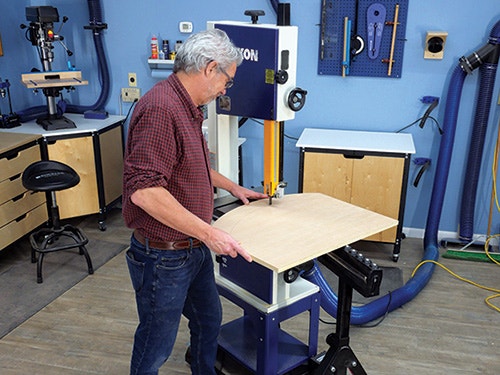Band Saw Fundamentals
Over 200 years ago, the idea of the bandsaw was born. A patent in 1808 was approved in England to William Newberry. Although another 40 years passed before a French woman, Anne Paulin Crepin, invented a welding technique that made manufacturing band saw blades, and hence the band saw, practical.
What Do They Do?
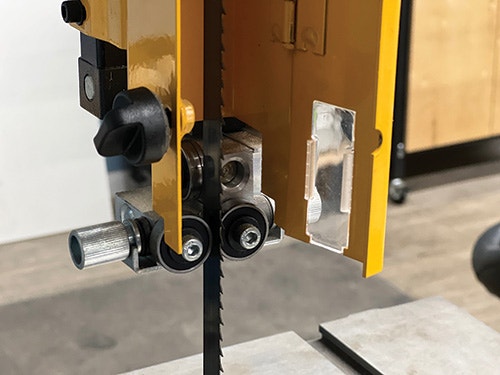
Bandsaws have a flexible metal saw blade that spins around two (or sometimes three) wheels — a drive wheel and an idler wheel that tensions it. It is a highly versatile tool that enhances woodworking in a number of ways. Bandsaws are used to cut wood, plastic, non-ferrous metals and even animal parts (at butcher shops). One of the most important aspects of band saws is that they can controllably cut curves in wood, an essential task in many aspects of woodworking. But they can do much more than that.
The reason that band saws are so versatile is due to their cutting action. The flexible metal saw blade is driven around the drive and idle wheels with the cutting action pushing straight down onto the table. The force exerted by the blade is beneficial in a couple of ways. First, unlike a circular saw blade, there is no rotational force pushing back on the saw cut; any directional force that you apply will not be inhibited in any way. Second, even if the saw blade binds up in the wood, there is no kickback or dangerous release of energy (for example, when you are ripping a piece of lumber) that will push the wood one way or the other. Combine that downward pressure with the ability to mount very narrow blades on the saw, and cutting tight radii is made easy. Here is a list of the band saw's most important cutting tasks.
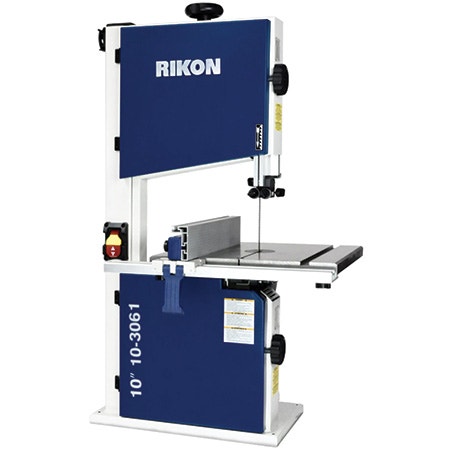 Bandsaws are made in a wide range of sizes. Even the smaller benchtop bandsaws can be workhorses in a woodshop.
Bandsaws are made in a wide range of sizes. Even the smaller benchtop bandsaws can be workhorses in a woodshop.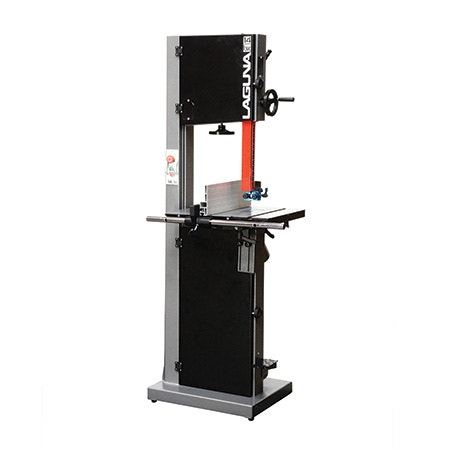 And mid-sized bandsaws — the classic 14" models — can nearly do it all.
And mid-sized bandsaws — the classic 14" models — can nearly do it all.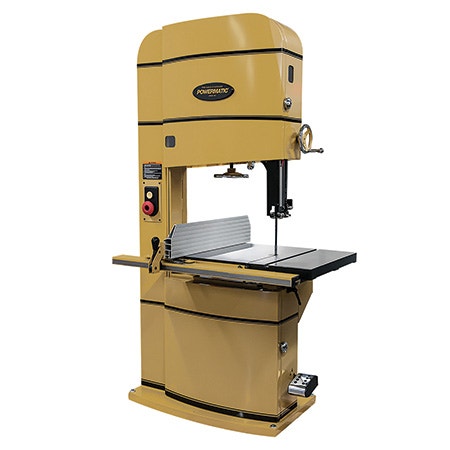 If you are going to be doing a lot of resawing or cutting up logs for turning blanks, a bigger industrial size bandsaw is definitely better.
If you are going to be doing a lot of resawing or cutting up logs for turning blanks, a bigger industrial size bandsaw is definitely better.Cutting Curves: As stated above, this is one of the most important techniques the band saw delivers. Curves are found in all sorts of furniture, including bed headboards, bow-front desks, round tabletops, corbels ... the list is very long. Making cabriole legs is a task made much easier with a band saw, as is cutting arcs in table aprons and the like. And you can cut these shapes accurately.
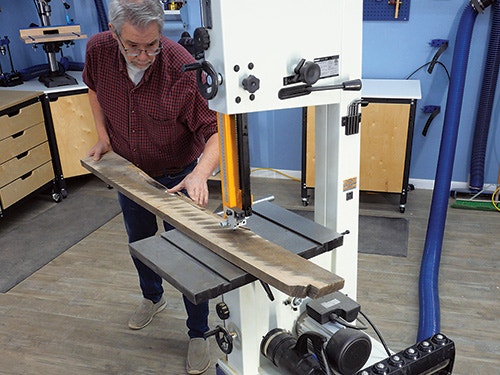
Rip Cuts: For some reason, many people do not think of the band saw when it comes to rip-cutting lumber. But band saws do a very good job of ripping lumber to width and doing it safely. Consider when you are preparing rough lumber to be jointed and planed. It is most effective to surface lumber that is already cut down into smaller pieces. And that is especially true if that lumber has twists, bows or other types of distortion. If you try ripping distorted lumber on the table saw, it can bind up the blade or even cause a kickback. Alternately, band saws are perfect for rip-cutting, since they pose no kickback hazard.
Crosscuts: While a band saw has limits regarding the length of the pieces it will crosscut, smaller pieces are easily split in two with the use of a miter gauge.

Resawing: One of the most useful tasks you can do on a band saw is resawing — perhaps second only in importance to cutting curves. Resawing involves standing a piece of lumber on its edge and then slicing it in two, the skinny way. Why would you want to do that? One reason is that it allows you to reduce the thickness of lumber with very little waste. Say you have stock that is 2" thick but you need 3/4" lumber. You can resaw the lumber and get two pieces of stock that you can surface to 3/4". If you had planed the stock down, you would have one board and the rest would be sawdust. Also, you can bookmatch pieces of wood with distinctive figure by opening boards up, or resaw thin slices to make veneer.
Joinery: Raising tenons is a task that the band saw does well. Set up a rip fence and test your cut to match your mortise and you are in business. You can also form the slot for a bridal joint (a variation of the mortise-and-tenon). Roughing out dovetails with a thin band saw blade is another joinery task that can be made faster and easier on this versatile machine. These are advanced techniques but are well within the scope of almost all woodworkers with practice.
That's Not All!

Woodturners have a special relationship with band saws. Taking a section of a log and cutting out bowl blanks is best done on a band saw. Why would you do that? Because green wood turns so much easier than seasoned wood. For that reason, most woodturners think a band saw is a must-have tool.
And speaking of logs, one thing I really like to do is slice boards from a log on my band saw. I use an L-shaped carrier to get the cuts started, then put the flat face on the table and start ripping boards. It is really fun to make projects from lumber you've milled. If you are into steam bending, green wood works so much better — and this is one good way to harvest green lumber for that task.
Additionally, the band saw is great for cutting tapered rip cuts, although the tapered edge is not as clean as what a table saw would leave. Most band saw tables will tilt for making bevel cuts — whether they are curves or straight edges. The former feat would be impossible on a table saw.
Keep the inspiration coming!
Subscribe to our newsletter for more woodworking tips and tricks
